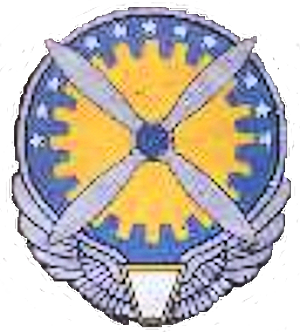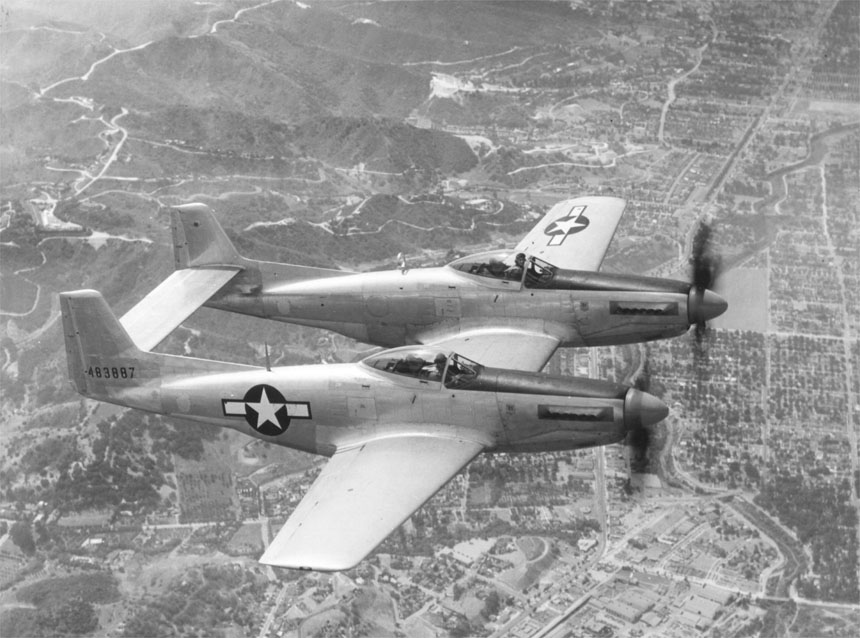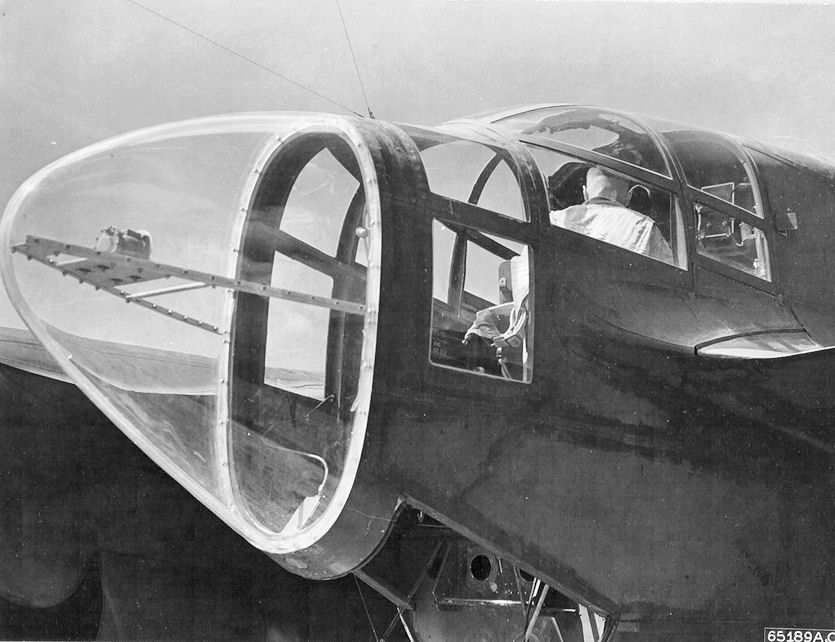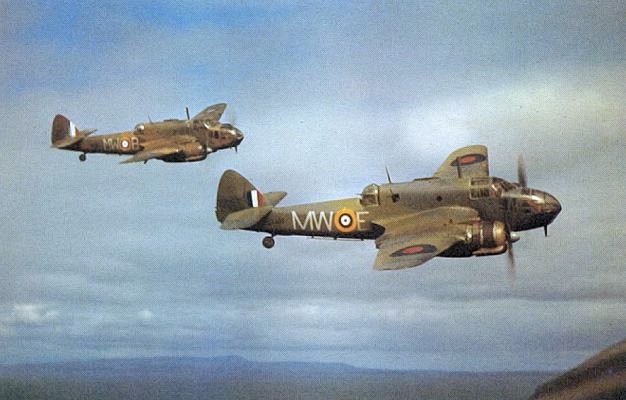|
Lockheed XP-58
The Lockheed XP-58 Chain Lightning was an American long-range fighter developed during World War II. Although derived from the successful P-38 Lightning, the XP-58 was plagued by technical problems with its engines that eventually led to the project's cancellation. Design and development The XP-58 was a Lockheed Aircraft Company funded initiative to develop an improved Lightning as a long-range fighter following the release by the U.S. Army Air Corps of the Lightning for sale to Britain on 20 April 1940. Initially, two designs were formulated, both using the Continental IV-1430 engines. One would be a single-seat aircraft with one 20 mm (.79 in) cannon and four .50 caliber (12.7 mm) machine guns. The second would be a two-seat aircraft with the addition of a flexible .50 caliber (12.7 mm) gun at the end of each tail boom.Francillon 1982, p. 252. In July 1940, Lockheed decided to switch to Pratt & Whitney XH-2600 engines as the aircraft would be unde ... [...More Info...] [...Related Items...] OR: [Wikipedia] [Google] [Baidu] |
WikiProject Aircraft
A WikiProject, or Wikiproject, is an affinity group for contributors with shared goals within the Wikimedia movement. WikiProjects are prevalent within the largest wiki, Wikipedia, and exist to varying degrees within Wikimedia project, sibling projects such as Wiktionary, Wikiquote, Wikidata, and Wikisource. They also exist in different languages, and translation of articles is a form of their collaboration. During the COVID-19 pandemic, CBS News noted the role of Wikipedia's WikiProject Medicine in maintaining the accuracy of articles related to the disease. Another WikiProject that has drawn attention is WikiProject Women Scientists, which was profiled by ''Smithsonian Magazine, Smithsonian'' for its efforts to improve coverage of women scientists which the profile noted had "helped increase the number of female scientists on Wikipedia from around 1,600 to over 5,000". On Wikipedia Some Wikipedia WikiProjects are substantial enough to engage in cooperative activities with outsi ... [...More Info...] [...Related Items...] OR: [Wikipedia] [Google] [Baidu] |
Air Materiel Command
Air Materiel Command (AMC) was a United States Army Air Forces and United States Air Force command. Its headquarters was located at Wright-Patterson Air Force Base, Ohio. In 1961, the command was redesignated the Air Force Logistics Command with some of its functions transferred to the new Air Force Systems Command. History The logistics function can be traced before the earliest days of the Air Service, when the Equipment Division of the U.S. Army Signal Corps established a headquarters for its new Airplane Engineering Department at McCook Field, Dayton, Ohio. Airplane Engineering Department The Airplane Engineering Department on McCook Field at Dayton, Ohio was established by the Chief Signal Officer, U.S. Army, and the Equipment Division of the U.S. Army Signal Corps on 13 October 1917. Its task was experimental engineering. The department had a Foreign Data Section by 1917. The Department established the Air School of Application in 1919. After World War I, the de ... [...More Info...] [...Related Items...] OR: [Wikipedia] [Google] [Baidu] |
List Of Aircraft Of World War II
The list of aircraft of World War II includes all of the aircraft used by countries which were at war during World War II from the period between when the country joined the war and the time the country withdrew from it, or when the war ended. Aircraft developed but not used operationally in the war are in the prototypes section at the bottom of the page. Prototypes for aircraft that entered service under a different design number are ignored in favor of the version that entered service. If the date of an aircraft's entry into service or first flight is not known, the aircraft will be listed by its name, the country of origin or major wartime users. Aircraft used for multiple roles are generally only listed under their primary role unless specialized versions were built for other roles in significant numbers. Aircraft used by neutral countries such as Spain, Switzerland and Sweden (or countries which did no significant fighting such as most of those in South America) are not include ... [...More Info...] [...Related Items...] OR: [Wikipedia] [Google] [Baidu] |
North American F-82 Twin Mustang
The North American F-82 Twin Mustang is an American long-range escort fighter aircraft, fighter. Based on the North American P-51 Mustang, the F-82 was designed as an escort for the Boeing B-29 Superfortress in World War II, but the war ended well before the first production units were operational. The F-82 was the last American piston-engined fighter ordered into production by the United States Air Force. In the postwar era, Strategic Air Command used the aircraft as a long-range escort fighter. Radar-equipped F-82s were used extensively by the Air Defense Command as replacements for the Northrop P-61 Black Widow as all-weather day/night interceptors. During the Korean War, Japan-based F-82s were among the first USAF aircraft to operate over Korea. The first three North Korean aircraft destroyed by U.S. forces were shot down by F-82s, the first being a North Korean Yakovlev Yak-11, Yak-11 downed over Gimpo International Airport, Gimpo Airfield by the USAF 68th Fighter Squadr ... [...More Info...] [...Related Items...] OR: [Wikipedia] [Google] [Baidu] |
Northrop P-61 Black Widow
The Northrop P-61 Black Widow is a twin-engine United States Army Air Forces fighter aircraft of World War II. It was the first operational U.S. warplane designed specifically as a night fighter. Named for the North American spider '' Latrodectus mactans'', it was an all-metal, twin-engine, twin-boom design armed with four forward-firing 20 mm (.79 in) Hispano M2 autocannon in the lower fuselage, and four M2 Browning machine guns in a dorsal gun turret. Developed during the war, the first test flight was made on 26 May 1942, with the first production aircraft rolling off the assembly line in October 1943. Although not produced in the large numbers of its contemporaries, the Black Widow was operated effectively as a night fighter by United States Army Air Forces squadrons in the European Theater, Pacific Theater, China Burma India Theater, and Mediterranean Theater during World War II. It replaced earlier British-designed night-fighter aircraft that had been up ... [...More Info...] [...Related Items...] OR: [Wikipedia] [Google] [Baidu] |
Bristol Beaufighter
The Bristol Type 156 Beaufighter (often called the Beau) is a British multi-role aircraft developed during the Second World War by the Bristol Aeroplane Company. It was originally conceived as a heavy fighter variant of the Bristol Beaufort torpedo bomber. The Beaufighter proved to be an effective night fighter, which came into service with the Royal Air Force (RAF) during the Battle of Britain, its large size allowing it to carry heavy armament and early aircraft interception radar without major performance penalties. The Beaufighter was used in many roles; receiving the nicknames ''Rockbeau'' for its use as a rocket-armed ground attack aircraft and ''Torbeau'' as a torpedo bomber against Axis shipping, in which it replaced the Beaufort. In later operations, it served mainly as a maritime strike/ground attack aircraft, RAF Coastal Command having operated the largest number of Beaufighters amongst all other commands at one point. The Royal Australian Air Force (RAAF) al ... [...More Info...] [...Related Items...] OR: [Wikipedia] [Google] [Baidu] |
M2 Browning
The M2 machine gun or Browning .50-caliber machine gun (informally, "Ma Deuce") is a heavy machine gun that was designed near the end of World War I by John Browning. While similar to Browning's M1919 Browning machine gun, which was chambered for the .30-06 Springfield, .30-06 cartridge, the M2 uses Browning's larger and more powerful .50 BMG (12.7 mm) cartridge. The design has had many designations; the official U.S. military designation for the infantry type is Browning Machine Gun, Cal. .50, M2, HB, Flexible. It has been used against infantry, light armored vehicles, watercraft, light fortifications, and low-flying aircraft. The gun has been used extensively as a vehicle weapon and for aircraft armament by the United States since the 1930s. It was heavily used during World War II, the Korean War, the Vietnam War, the Falklands War, the Soviet–Afghan War, the Gulf War, the Iraq War, and the War in Afghanistan (2001–present), War in Afghanistan. It is the primary heavy mac ... [...More Info...] [...Related Items...] OR: [Wikipedia] [Google] [Baidu] |
50 BMG
The .50 BMG (.50 Browning Machine Gun), also known as 12.7×99mm NATO, and designated as the 50 Browning by the C.I.P., is a 12mm caliber, caliber cartridge developed for the M2 Browning heavy machine gun in the late 1910s, entering official service in 1921. Under STANAG#Partial list, STANAG 4383, it is a standard service Cartridge (firearms), cartridge for NATO forces. The cartridge itself has been made in many variants: multiple generations of regular full metal jacket bullet, ball, tracer ammunition, tracer, armor-piercing bullet, armor-piercing (AP), Incendiary ammunition, incendiary, and Sabot (firearms), saboted Sub-caliber ammunition, sub-caliber Saboted light armor penetrator, penetrator rounds. The rounds intended for machine guns are made into a continuous belt (firearms), ammunition belt using metallic links. The .50 BMG cartridge is also used in anti-materiel rifles. A wide variety of ammunition is available, and the availability of match grade ammunition has increa ... [...More Info...] [...Related Items...] OR: [Wikipedia] [Google] [Baidu] |
75 Mm Gun M2/M3/M6
{{Numberdis ...
75 may refer to: * 75 (number) * one of the years 75 BC, AD 75, 1975, 2075 * ''75'' (album), an album by Joe Zawinul * 75 Eurydike, a main-belt asteroid Vehicles * Alfa Romeo 75, a compact executive sedan * Tatra 75, a mid-size car * Various Rover models: ** Rover 75, an executive car ** Rover 75, a saloon ** Rover 75, a large family car See also * * * * Canon de 75 modèle 1897 (the 75, or, French 75) * M75 (other) * List of highways numbered 75 The following highways are numbered 75: International * AH75, Asian Highway 75 * European route E75 Afghanistan *Kandahar-Boldak Highway (A75) Australia * Cobb Highway, NSW * Northern Highway (Victoria), Northern Highway, Victoria Brazil * ... [...More Info...] [...Related Items...] OR: [Wikipedia] [Google] [Baidu] |
37×145mmR
The 37×145mmR was a series of rimmed-case, fixed-ammunition cannon shells for use in the 37mm M4 cannon, Browning M4 autocannon. The rapid strides in aircraft protection made it necessary to develop an aircraft weapon that would fire projectiles with greater explosive and armor-piercing qualities than smaller caliber weapons. As a result, the T9 automatic gun was developed. It was standardized for aircraft use as the M4 cannon in 1942. The gun, M4, used the same high-explosive (M54) and practice (M55A1) projectiles as the antiaircraft gun, M1A2, but different cartridge cases were necessary due to the larger chamber of the M4 gun. The M4 was later replaced by the more powerful 37mm M9 autocannon. Ammunition Ammunition was issued in the form of fixed rounds, consisting of: *H.E.T. shell, M54, with Fuze#Impact, Point-Detonating fuze, M56 *Practice shell, M55A1, with dummy fuze, M50 *A.P. shot, M80. High-explosive Tracer shell, 37 mm, M54 standard This shell used the M5 ... [...More Info...] [...Related Items...] OR: [Wikipedia] [Google] [Baidu] |





